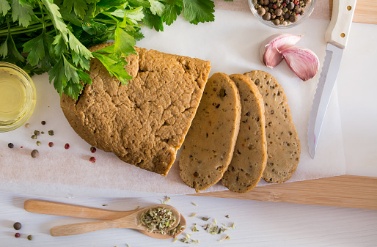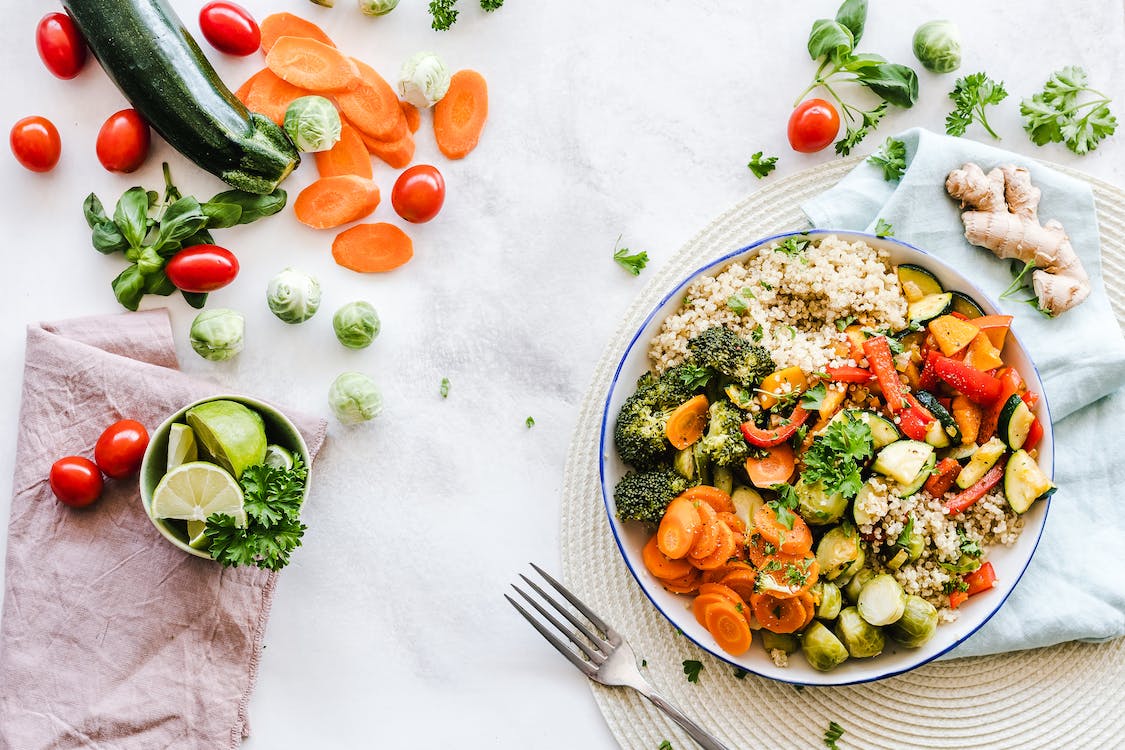Tempeh vs Tofu vs Seitan | Discover a Contrast in nutritional profile and Benefits | Look here for cooking tips
Tempeh vs tofu vs seitan are all meat substitutes and typically they are all delicious. But they are very different and usually can be used in different ways. Whether you’re vegetarian or want to eat more plant-based foods, tempeh, tofu, and seitan are verily great sources of plant-based protein.
This post typically focuses on Tempeh vs tofu vs seitan, their benefits, and nutrition (mainly protein quantity and quality). Taste is subjective, but we’ll discuss mainly the nutrition info and also the cooking tips.
For nutrition, we simply compare Tempeh vs tofu vs Seitan. Yet, the main difference is that you can easily find tofu and tempeh in supermarkets than seitan.
Tempeh vs Tofu vs Seitan
Tempeh
Normally, Tempeh is made from whole fermented soybeans, which usually add a firmer texture and flavor. Although soybean is the main ingredient of tempeh and tofu, still their texture and taste are quite different. Indonesian tempeh normally has undergone minimal processing and is mainly made from fully fermented and ripened grains and then rolled into tight blocks.
Unlike tofu bread, tempeh bread largely has whole beans in it, which makes it a better bite. Due to the fermentation process, the taste is also earthy and slightly funky (like mushrooms).
Health Benefits:
Like other soy products, tempeh also contains isoflavones. These are chemicals called phytoestrogens that mainly have anti-cancer and antioxidant properties. There is also evidence that soy products such as tempeh can:
- Improves cholesterol
- Lower your blood pressure
- Protect your heart
- Better insulin resistance
- Low inflammation
- Helps relieve menopausal hot flashes
- Strengthens bone health
- Usually, tempeh does not cause bloating or gas. However, it is a good alternative to soy for people mainly with digestive problems such as irritable bowel syndrome (IBS).
Nutritional profile:
Mainly, tempeh has no cholesterol and importantly is a great way to get your B vitamins, fiber, iron, calcium, and other minerals.
3 ounces of tempeh contains:
- 160 calories
- 18 grams of protein
- 5 g fat (2 g saturated fat, 2 g polyunsaturated fat, 1 g monounsaturated fat)
- 10 grams of carbohydrates
- 28% daily fiber
- 6% of daily calcium
- 10% of daily iron
Cooking tip:
When cooking, try to shred your tempeh and also replace it with minced meat. Further, fry or marinate in smoked paprika and also in strips to make vegetarian “bacon”.
Tofu
Naturally, you can easily prepare tofu from milk and diced soybeans.
Verily in Tempeh vs tofu vs seitan, tofu is probably the most common vegetarian protein and primarily is a soy product sold in solid white blocks. Simply, prepare tofu by soaking dried soybeans in water, crushing them, and cooking them. Similar to the preparation of almond milk and other non-dairy kinds of milks. After cooking pulp, eventually, soy milk is left behind. Now, pour milk into molds using natural thickeners, and eventually forms protein-rich blocks.
Health Benefits:
- Certainly, a diet rich in a variety of plant foods importantly contributes to overall health and well-being.
- Surely, it reduces the risk of conditions such as obesity, diabetes, and even heart disease.
- Can improve skin and hair and also
- Increases energy
- Aids maintain a healthy weight and even reduces the risk of several age- and lifestyle-related diseases.
- Indeed lower “bad” cholesterol.
- Relieve some of the symptoms of menopause.
Nutritional Profile:
- Calories: 144
- Protein: 17 g
- Carbohydrates: 3 g
- Fiber: 2 g
- Fat: 9 g
- Calcium: 53%
- Manganese: 51%
- Copper: 42%
- Selenium: 32%
- Vitamin A: 18%
- Phosphorus: 15%
- Iron: 15%
- Magnesium: 14%
- Zinc: 14%
Cooking Tip:
In grocery stores, likely you’ll find tofu sold in soft, firm, and very firm textures, largely depending on the density of the tofu. Generally, firm varieties are best for grilling, and roasting, while silken tofu is best for smoothies or soups. Likewise, tofu can be a real asset because it’s virtually tasteless, truly absorbing the flavor of whatever you cook it with.
Seitan
Comparatively in tempeh vs tofu vs seitan, Seitan (pronounced say Tan) is very different from tofu and tempeh. Because you can prepare it with wheat gluten instead of soybeans. Particularly, the protein that gives bread its springy texture- wheat gluten produces seitan. Regardless, this is a healthy plant-based option for many people but should be avoided by those with celiac disease or gluten sensitivity.
To make seitan, firstly mix flour with water and knead until it forms a sticky dough. Then wash to remove the starch, ultimately leaving only the protein. Anyhow, you can buy ready-made or buy dry wheat gluten and mix it yourself with water. Be aware of the sodium content before cooking because most processed seitan contains salt and other ingredients.
Health Benefits:
- Precisely, low in calories, surely making it a great protein choice to add to meals importantly if you want to keep it light.
- Rich in protein.
- Specifically, seitan is versatile, and even you can use it in many recipes as well.
- Plus, seitan is rich in vitamins.
- Fundamentally, it is one of the soy-free meat substitutes.
- Absorbs flavor well and can easily imitate the taste and texture of meat.
Nutritional Profile:
¼ cup (28 g) serving primarily includes:
- Calories: 104
- Fats: 0.5 g
- Total carbs: 4g
- Fiber: 0.2 g
- Protein: 21 g
- Selenium: 16%
- Iron: 8%
- Phosphorus: 7%
- Calcium: 4%
- Copper: 3%
Cooking tip:
Predominantly, seitan is a great meat substitute merely because of its dense, slightly spongy texture. Use in place of beef in a fajita or cheesesteak instead of fried chicken.
Final Thoughts
In order to sum up tempeh vs tofu vs seitan, essentially all three are good sources of plant protein and are versatile enough to be used in a variety of dishes. Nonetheless, they are still popular among herbivores and carnivores but are not necessarily interchangeable. Confusion remains about how they are made and what they should be used for. Finally, most people make their seitan as it’s much easier than making tofu or tempeh.




